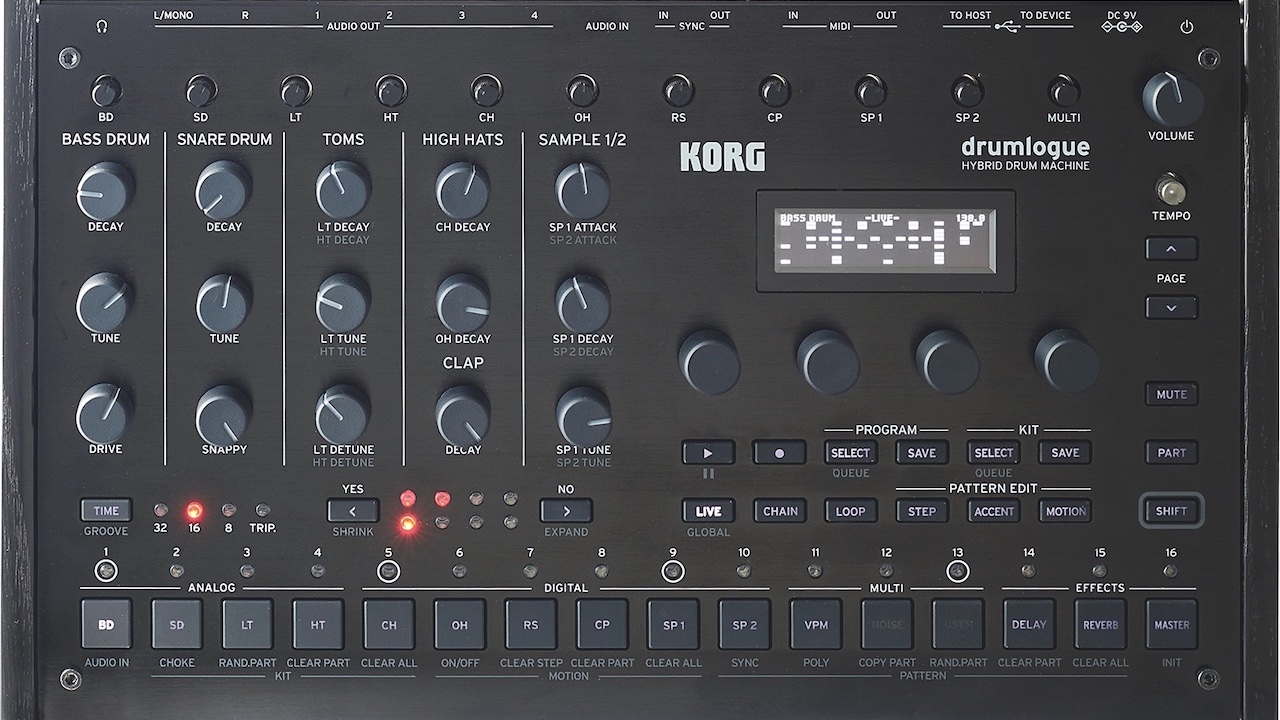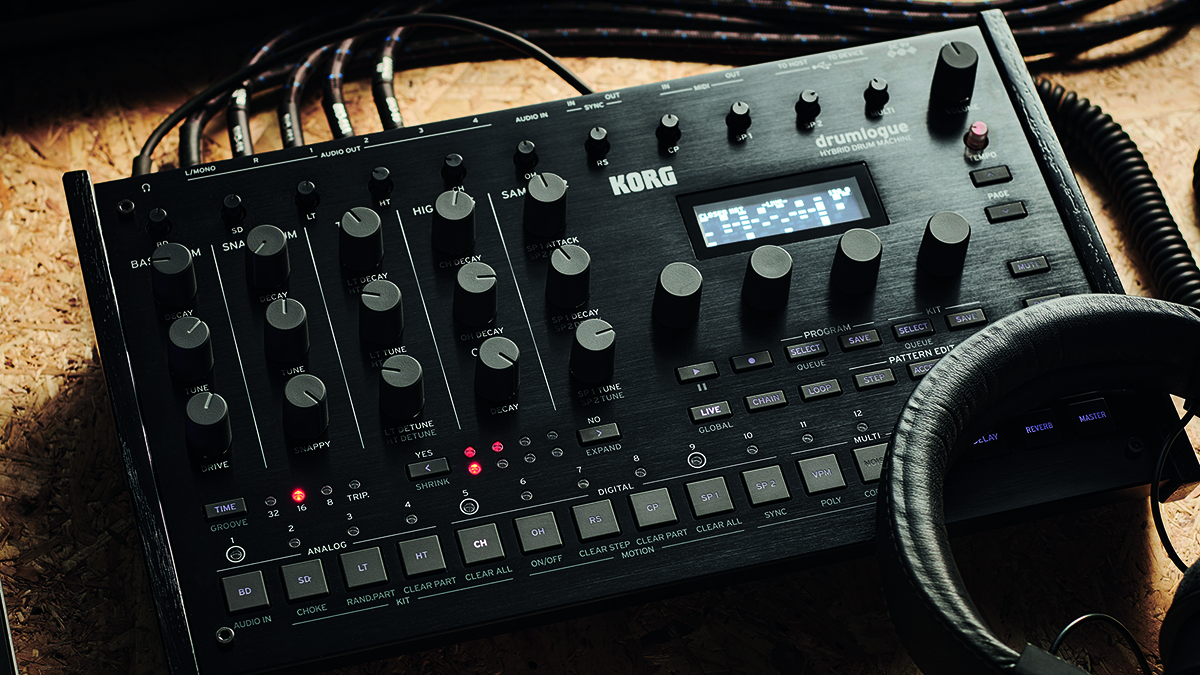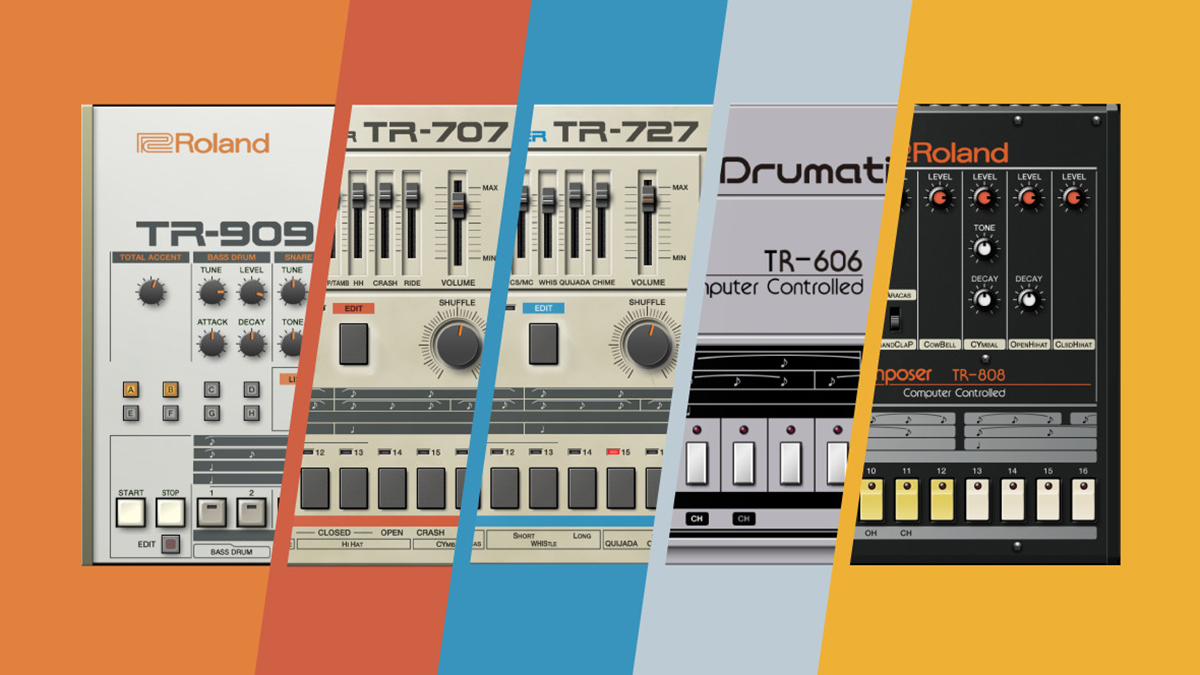
Aside from a few interesting outliers, most hardware drum machines come equipped with a step sequencer that will be loosely rooted in the design used by Roland’s classic 808 and 909.
However, while most machines share a lot of basic functionality, there’s variation in the tools that allow us to bring feel and interest to drum patterns. Let’s take a look at some of the core tools…
Swing and groove
Swing is a parameter common to even the most basic drum machines. A standard drum machine’s step sequencer divides each looped pattern into a set number of steps – typically 8, 16 or 32. By default, these steps are evenly spaced out, resulting in rigid timing that lacks the natural ‘feel’ of a human drummer, and can sound somewhat robotic as a result. Swing adjusts the spacing between sequencer steps so that off-beat hits fall a little behind the beat, creating a looser feel.
The higher the swing amount, the more ‘wonky’ your programmed beat will feel
The higher the swing amount, the more ‘wonky’ your programmed beat will feel. Some machines, such as Korg’s Drumlogue, make use of ‘grooves’ to a similar effect. These grooves are predefined patterns that users can quantise their own rhythms to by varying amounts – ie controlling how close your own drum pattern matches that of the preset groove.
A final way that sequencers allow us to introduce groove or swing is by manually nudging certain hits off of the rigid sequencer grid. With most Elektron machines, for example, this can be done by holding down a step with an active sequencer trigger on it, and using the left and right arrows to move that hit away from the centre point of the sequencer grid.
Accents and velocity
Dynamic range – ie variations in loudness – is important to music. Riffs or patterns played consistently at the same level will sound unnatural and dull to our ears. Many classic drum machines used a system of Accents to apply variations in velocity. In the case of the TR-808, for example, a separate accent lane on the sequencer let users emphasise designated sequencer steps, the global level of which was adjusted with an accent dial.

Modern machines have gotten far more sophisticated on this front. Many modern drum machines will register a full range of velocity when played ‘live’, either using their onboard pads or an external MIDI controller. Other instruments, such as those from Elektron, allow the user to program a specific velocity level for each hit. Doing so can be great for creating more realistic and varied patterns, allowing the user to insert low level ‘ghost notes’ around the main beat.
However, if authentic sounding ‘vintage’ drums are what you’re after – ie a convincing approximation of something like a 909, 808 or LinnDrum – try to use no more than two or three different velocity values for all of your drums, emulating the accented/unaccented feel of classic gear.
Flams and rolls
Flams and rolls are both quick repeats played in quick succession, usually programmed to a single sequencer step. The most common application of these is usually for a snare drum or rim shot – emulating the snare rolls and flams played by real drummers – although most drum machines with these capabilities will let you program repeats on any track. The rapid-fire triplet hi-hats used in trap beats are a good example of a non-snare use.
Probability and conditions
Probability sequencing is a powerful and increasingly common feature found on drum machines. This lets users set a probability level for each step, which dictates how likely it is for that sound to trigger with each cycle of the sequencer. A probability level of 100 will mean we hear a sound every time, a level of 50 means there’s a 1 in 2 chance of the drum sound triggering each time, and so on.

Best drum machine plugins: Sample and synthesis VSTs for beatmaking
The reason this is such a powerful tool is that it allows us to introduce an element of unpredictability to overwise repetitive sounds. Try, for example, inserting open hats with a low probability to break up a repetitive pattern of closed hats. Conditional triggers take this idea further, by allowing the user to dictate certain parameters that influence whether or not we hear a sound. For example, we could set a clap to trigger only on the fourth repetition of the pattern, or only on the first repetition but not on any of the preceding ones.
Parameter locks and automation
Modern drum machines often let us sequence parameter changes – variably called things like parameter locks (Elektron) or motion sequencing (Korg) – alongside the beats themselves. This is incredibly useful for programming beats that change over time, for example, sweeping a low-pass filter so that drum sounds get brighter or darker, or programming changes in the pitch of a sound to create melodies or basslines.
At its most extreme, these automation capabilities can be used to completely change the sound from step to step by, for example, altering the sound shaping parameters or source sample of a drum hit. Doing so can be incredibly handy in some cases, as it allows us to increase the variety of sounds our drum machine can produce. For example, we could use a single audio track to sequence both a snare and a rim shot sound.
Sequence length
While drum machine sequencers usually come equipped with a set number of physical step buttons – often 8 or 16 – the sequences it’s possible to create can often be longer than this, by chaining ‘pages’ of steps one after another. As well as letting us adjust the overall length of our patterns, many modern drum machines allow us to adjust the specific number of steps used by each sound in our sequence – ie allowing for different pattern lengths for snares, kicks etc.
Setting uneven step lengths for different channels can create sequences that evolve over time. Known as polymetric sequences, these are patterns that will change with each repetition as the start point for each drum sound falls at a slightly different place in the sequence, meaning the relationship between them will shift over time.
Fills and variations
Fills or variations offer alternate versions of your current pattern. Rather than simply moving to a different saved preset, these tools will usually allow you to insert momentary variations into your grooves.



!["[T]he First and Fifth Amendments Require ICE to Provide Information About the Whereabouts of a Detained Person"](https://images.inkl.com/s3/publisher/cover/212/reason-cover.png?w=600)



